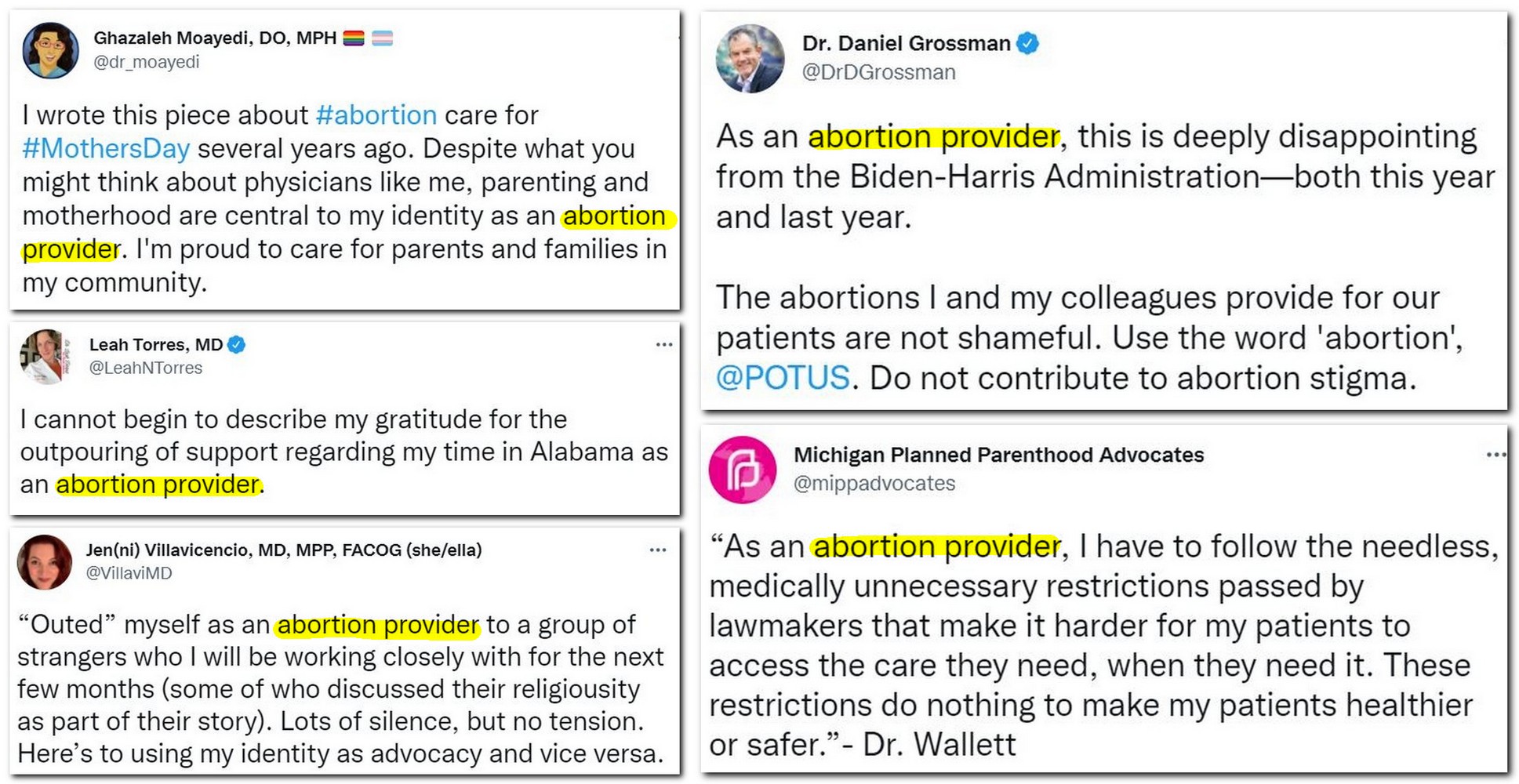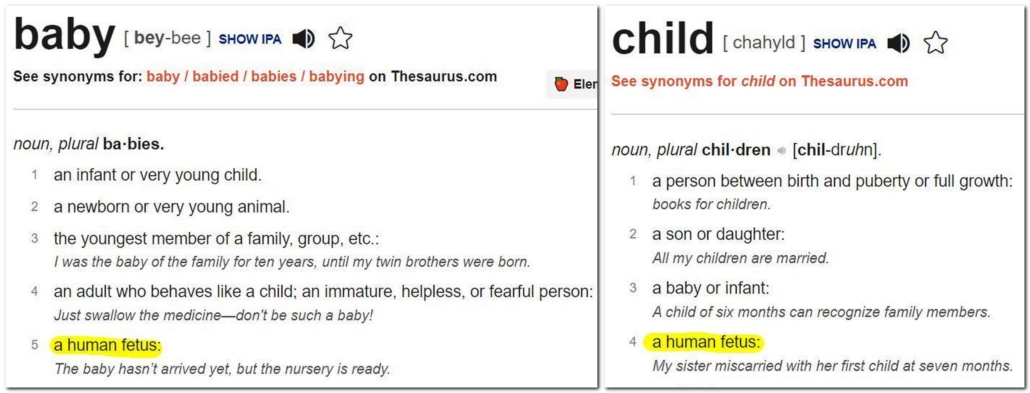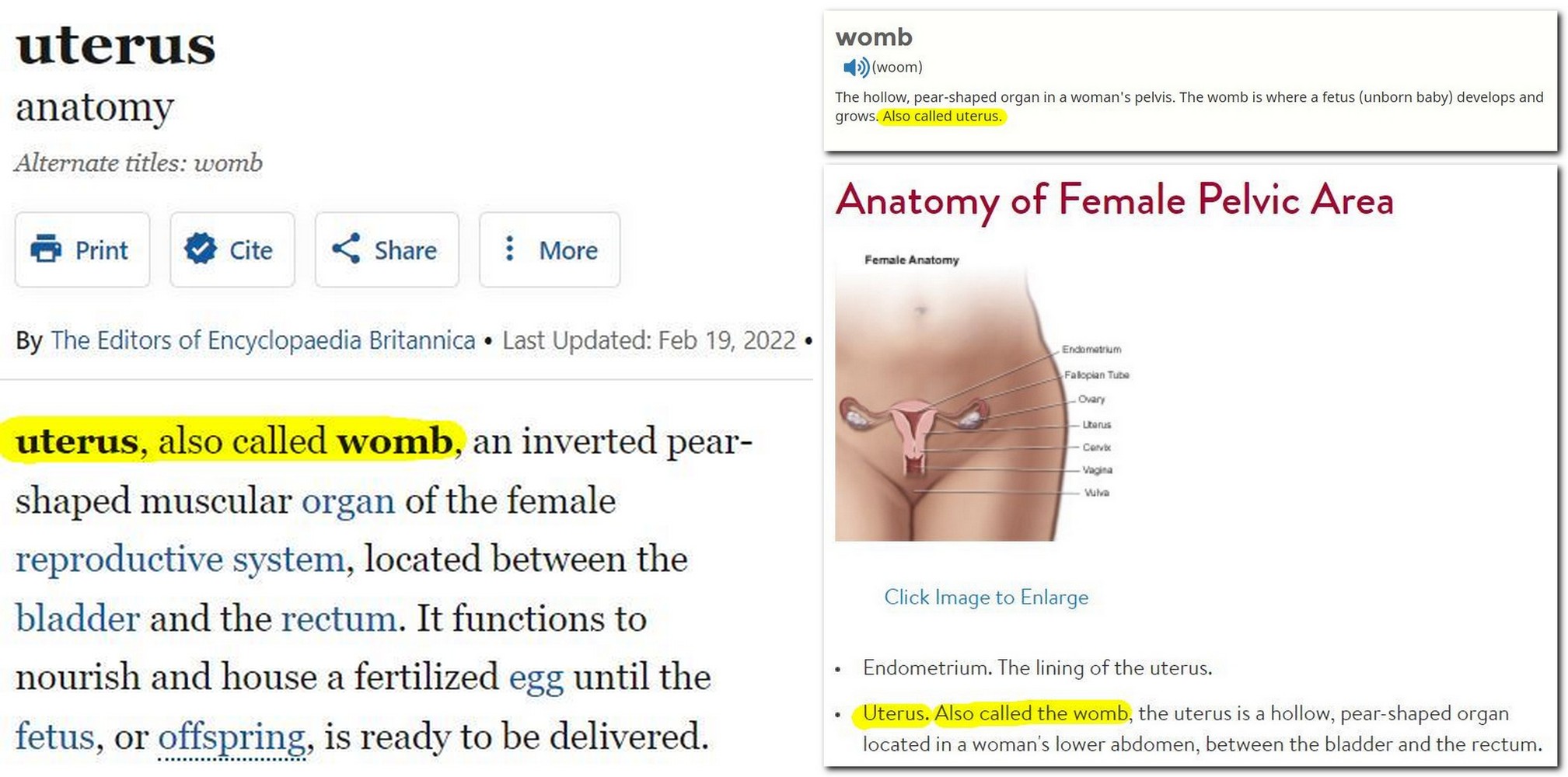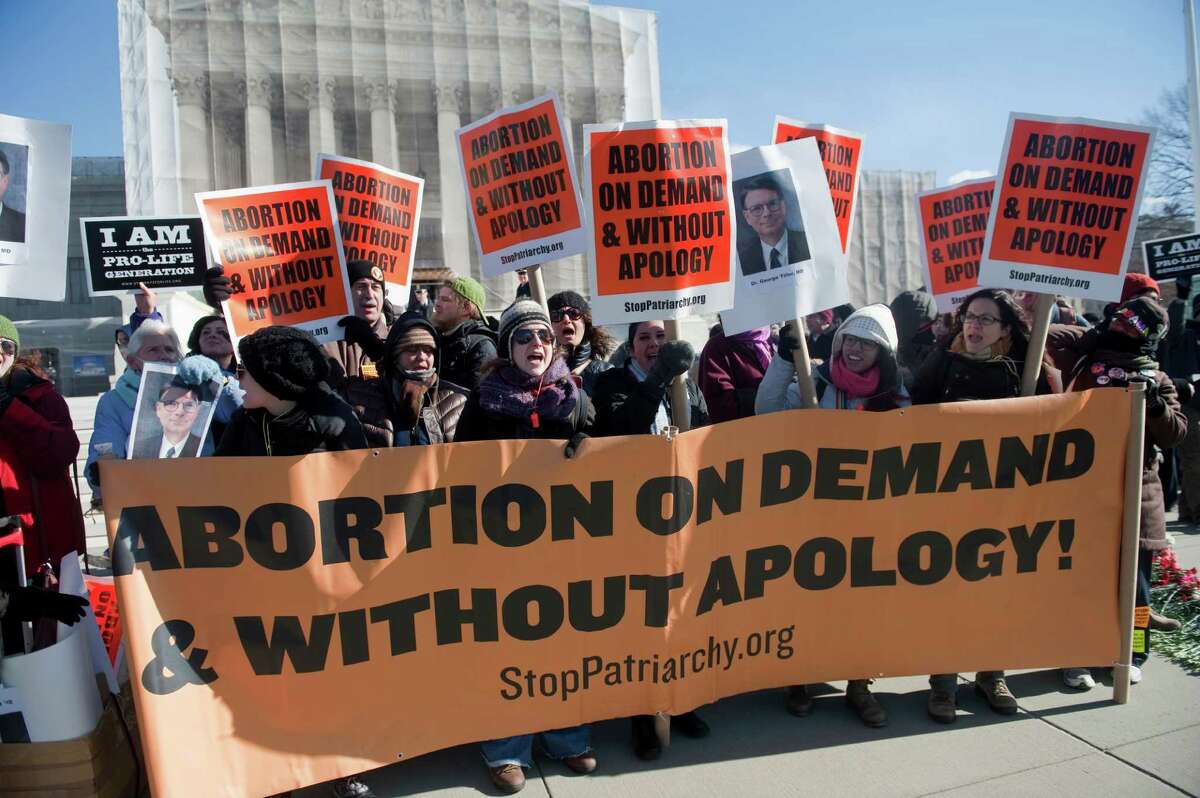ACOG has spoken: 13 phrases we no longer are supposed to use regarding abortion
[This post is available as a Twitter thread here.]
Introduction
ACOG (the American College of Obstetricians and Gynecologists) recently released a “Guide to Language and Abortion,” and Quartz covered the guide in their article “13 phrases US doctors want removed from our vocabulary about abortion.”
It’s problematic to assume ACOG and “US doctors” are interchangeable groups. This study found that over 75% of ACOG’s members did not perform abortions, and the most commonly cited reason was personal beliefs against the practice. ACOG’s policy positions don’t necessarily represent the views of even their own membership, much less all OBGYNs, much less all US doctors.
As with many abortion advocacy pieces, the Quartz article describes abortion as a purely medical matter and claims ACOG simply wants everyone to use scientifically accurate terms when discussing medical topics. Similarly, ACOG’s guide states that many of the phrases listed below are “biased,” “inaccurate,” and “not medically appropriate.” But abortion is multi-faceted. Aspects of the topic are medical, but the issue also has sociological, economic, philosophical, ethical, and deeply personal implications. The abortion debate centers on questions about morality and legality, not solely medicine, so insisting the public talk about abortion only in medical terms is just begging the question. We turn to doctors for their expertise regarding questions of medicine, yes, but not for their permission to speak, think, or feel specific ways about a given topic.
And, as we’ll see shortly, ACOG’s language guidance is not primarily based on medical accuracy anyway; the majority of their objections to certain phrases focus on stigma and value systems. The replacement terms they suggest are often unfamiliar to the non-medical public and obfuscate more than clarify. But, then, perhaps that is the point.
Here is Quartz’s graphic summarizing 13 phrases ACOG would like us to stop using:

1. Late-term abortion
ACOG bulletin: This phrase has no clinical or medical significance. “Term” historically referred to the 3 weeks before and 2 weeks after a pregnancy’s due date. To be even more clinically accurate, ACOG now refers to early term (37 weeks through 38 weeks and 6 days of gestation), full term (39 weeks through 40 weeks and 6 days of gestation), late term (41 weeks through 41 weeks and 6 days of gestation), and postterm (42 weeks of gestation and beyond)—and abortion does not happen in this period. Use instead: “abortion later in pregnancy” or reference weeks of gestation (for example “abortion at 14 weeks of gestation”).
I’ve seen other abortion rights advocates suggest the term “later abortion” replace “late-term abortion.” The phrases sound equivalent to me and I don’t mind using either, but “late-term abortion” has been the much more common phrase for decades, according to the Google Ngram tool.

Additionally, abortion rights groups, pro-choice advocates, and abortion clinics themselves have used the phrase “late-term abortion” without issue for many years. I suspect the general public is more familiar with “late-term abortion” as a reference to abortion later in pregnancy (e.g. in the 2nd half of pregnancy) than as a reference to the 41 weeks through 41 weeks 6 days definition used primarily by clinicians.
With this phrase at least, ACOG cited a reason for considering “late-term abortion” medically inaccurate and gave an explanation based on standard clinical practice for why the phrase is confusing. The same can’t be said for much of the rest of their language guidance.
2. Chemical abortion
ACOG bulletin: This is a biased term designed to make medication abortion sound scarier than the safe, effective medical intervention it is. Use instead: “medication abortion”
Note ACOG’s objection to “chemical abortion” is not that the phrase is inaccurate, but that it is “biased.” Medication abortion typically involves mifepristone and misoprostol, both of which are chemicals (see their chemical structures and molecular formulas here and here). This isn’t remarkable – medications are chemicals. For example, you can also see the structures and formulas of Ibuprofen (Advil) and dextromethorphan (Robitussin). It is just as accurate to describe an abortion brought about by mifepristone/misoprostol as a “chemical abortion” as to describe it as a “medication abortion.”
ACOG objects to “chemical abortion” not because the phrase is incorrect, but because the connotation is negative. Chemophobia is unfortunately common among the public. Many people associate the word “chemical” with something artificial and even dangerous. In contrast, many associate the word “medication” with safety and healing.
I personally opt to use “medication abortion” in order to decrease confusion. At SPL we have done informal surveys about this and found that, even among pro-lifers, many people don’t realize the terms “chemical abortion” and “medication abortion” are referring to the same idea. And since, according to the Google Ngram tool, “medication abortion” is far more commonly used than “chemical abortion,” I use the phrase more people are likely to recognize and associate with the concepts I’m discussing.

Some pro-lifers object to “medication abortion” because they view the phrase as having inappropriately positive connotations, but I believe if pro-life activists as a whole used the phrase, we would see the same language creep that has happened with some of the other abortion-related phrases that were previously considered neutral (see “7. Abortion Provider”). Whatever language becomes the norm, the vernacular doesn’t change the concrete concepts we’re discussing. If there is enough stigma around the concept itself, the stigma eventually attaches to whatever vocabulary we use to describe the concept. Abortion advocates keep trying to change the language to outrun the stigma, but once the public associates new terms with the same old ideas, the stigma follows.
Either way, it is scientifically accurate to refer to mifepristone or misoprostol as “chemicals,” and abortions brought about by them as “chemical abortions.”
3. Surgical abortion
ACOG bulletin: The abortion procedure is not a surgery. Referring to it as a procedure is clinically accurate. Use instead: “abortion procedure”
ACOG does not explain which definition of surgery would preclude abortions. According to the American Medical Association Definition of Surgery H-475.983:
Surgery is performed for the purpose of structurally altering the human body by the incision or destruction of tissues and is part of the practice of medicine. Surgery also is the diagnostic or therapeutic treatment of conditions or disease processes by any instruments causing localized alteration or transposition of live human tissue which include lasers, ultrasound, ionizing radiation, scalpels, probes, and needles. The tissue can be cut, burned, vaporized, frozen, sutured, probed, or manipulated by closed reductions for major dislocations or fractures, or otherwise altered by mechanical, thermal, light-based, electromagnetic, or chemical means. Injection of diagnostic or therapeutic substances into body cavities, internal organs, joints, sensory organs, and the central nervous system also is considered to be surgery (this does not include the administration by nursing personnel of some injections, subcutaneous, intramuscular, and intravenous, when ordered by a physician). All of these surgical procedures are invasive, including those that are performed with lasers, and the risks of any surgical procedure are not eliminated by using a light knife or laser in place of a metal knife, or scalpel.
Abortion procedures qualify under this definition. According to UpToDate (an evidence-based clinical database used by healthcare providers around the world), the most common first trimester abortion procedure, uterine aspiration, involves a cannula (thin tube) attached to a vacuum aspirator (suction machine) used to evacuate pregnancy tissue from the uterus. Depending on gestational age, “pregnancy tissue” could mean the gestational sac alone, or in conjunction with placenta and identifiable fetal parts including “four extremities, spine, calvarium [skull].”
In other words, uterine aspiration abortion involves using instruments to mechanically alter live human tissue, making it a surgical procedure according to the AMA. Note, also, that UpToDate refers to this process as “surgical abortion”:

And many of the references to the UpToDate article mention “surgical abortion” in the citation titles:

There is nothing medically inaccurate about using the phrase “surgical abortion” to refer to abortion procedures.
4. Heartbeat bill
ACOG bulletin: It is clinically inaccurate to use the word “heartbeat” to describe the sound that can be heard on ultrasound in very early pregnancy. In fact, there are no chambers of the heart developed at the early stage in pregnancy that this word is used to describe, so there is no recognizable “heartbeat.” What pregnant people may hear is the ultrasound machine translating electronic impulses that signify fetal cardiac activity into the sound that we recognize as a heartbeat. Use instead: “gestational age bans,” or identify by gestational age (such as “15-week ban” or “6-week ban”)
In this instance, not only is “Heartbeat bill” a scientifically accurate phrase, but ACOG’s objection is itself scientifically inaccurate in multiple ways.
First, chambers of the embryonic heart form by the 5th week after fertilization (7 weeks gestation). Here we collect links to multiple scientific sources explaining that and other facts about the embryo’s cardiovascular development.

Second, ultrasound machines cannot detect electrical activity. When evaluating the embryonic heartbeat and heart rate, medical providers set ultrasounds to a mode that detects movement: specifically the machine detects the contraction of the embryonic heart as it pumps blood through the embryo’s veins.
[Read more and see sources – Opponents of heartbeat bills don’t understand how ultrasounds work]
Third, gestational age bans are not interchangeable with heartbeat bans.
A gestational age ban restricts abortion based on the estimated age of the embryo or fetus. For example, Mississippi’s Gestational Age Act limits abortion (with some exceptions) to 15 weeks’ gestation, where the Act defines “gestation” to mean the time since the first day of the woman’s last menstrual period.
In contrast, heartbeat bans restrict abortion based on whether a fetal heartbeat is detectable. For example, the Texas Heartbeat Act prohibits abortion “if the physician detected a fetal heartbeat for the unborn child,” where the Act defines “fetal heartbeat” as “cardiac activity or the steady and repetitive rhythmic contraction of the fetal heart.” This Act is not a “6 week ban” because, even if the embryo is 6 weeks or older, if there is no detectable heartbeat the abortion is legal. The restriction isn’t based on a certain gestational age; it’s based on whether there is a detectable heartbeat.
There is nothing medically inaccurate about referring to a restriction based on fetal heartbeat as a “Heartbeat bill,” and in this case, there is quite a bit of medical inaccuracy in ACOG’s own explanations.
5. Fetal heartbeat
ACOG bulletin: Until the chambers of the heart have been developed and can be detected via ultrasound (roughly 17-20 weeks of gestation), it is not accurate to characterize the embryo’s or fetus’s cardiac development as a heartbeat. Use instead: “fetal cardiac activity”
Again, ACOG is medically inaccurate here. See the details and sources linked above (“4. Heartbeat bill”). As countless parents can attest to from firsthand experience, it is standard prenatal care and medical practice to use ultrasound to determine the presence and rate of the fetal heartbeat in the first trimester (i.e. 12 weeks of gestation and earlier). The presence and rate of fetal heartbeat at this stage are clinically significant, as they can indicate likelihood of miscarriage or continuation to live birth (see sources here – notice each of these sources also refers to “heart,” “heartbeat,” and/or “heart rate”).
There is nothing medically inaccurate about referring to the heart’s rhythmic muscle contractions used to pump blood through the embryo’s veins as a “heartbeat.”
[Read more – Responding to 7 pro-choice claims about embryonic hearts]
6. Dismemberment ban
ACOG bulletin: A recommended method for an abortion procedure after 12 weeks of gestation is dilation & evacuation, in which the clinician dilates the cervix and then removes the fetus using a combination of vacuum aspiration and forceps, which can lead to disarticulation. Referring to this medical procedure as “dismemberment” is intentional use of inflammatory, emotional language and centers the procedure on the fetus, rather than on the pregnant person who is the clinician’s patient. Use instead: “dilation & evacuation ban”)
Note ACOG’s objection to “dismemberment ban” is not that the phrase is inaccurate, but that it is “inflammatory.” By ACOG’s own explanation, dilation & evacuation can lead to disarticulation, which is a type of dismemberment.


Dilation & evacuation not only can but usually does lead to dismemberment, which is why it’s contrasted with a different version of the procedure known as Intact dilation & evacuation (see “11. Partial-birth abortion”). If a piece of legislation is designed to restrict abortion procedures that commonly lead to fetal dismemberment (as dilation & evacuation does), it is accurate to describe that as a “dismemberment ban.” The phrase is inflammatory only insofar as dismembering fetuses is inflammatory, which is what dilation & evacuation does.
ACOG also objects to the phrase “dismemberment ban” for focusing on the fetus instead of the pregnant person. But focusing on the fetus is not an issue of medical accuracy; it’s an issue of priorities and value systems. Accuracy and priorities are orthogonal issues: we could be completely inaccurate about a crucial factor, perfectly accurate about a meaningless tangent, or anything in between. ACOG claims to just want accuracy, but multiple times in their language guidance they diverge into admonitions about whether and how language assigns value.
When they object to focusing on the fetus, ACOG oversteps not only their own authority but also normal parameters of the abortion debate. The vast majority of Americans recognize that the fetus is relevant to the discussion, as evidenced by the fact that 65% think abortion should be illegal in the 2nd trimester and 80% think so in the third (the gestational ages when ACOG says “disarticulation” can happen). In many cases, women seeking abortion also focus on the fetus, as evidenced by the frequent desire to see their ultrasounds and common questions about whether the fetus will feel pain. Only the most fervent abortion advocates try to prevent people from giving the fetus any consideration. Apparently ACOG is among them.
There is nothing medically inaccurate about referring to legislation that prevents an abortion method which typically disarticulates the fetus as a “dismemberment ban.” ACOG’s objections are based on ideas of stigma and value, not on inaccuracy.
7. Abortion provider
ACOG bulletin: Clinicians who provide abortion care are highly trained medical experts who provide patients with a wide range of medical care, of which abortion is a part. Using this phrase perpetuates the myth that they are not medical experts and that abortion care is the extent of their expertise. Use instead: “physician(s) who provide abortion” if you are referring specifically to doctors, “clinician(s) who provide abortion” if you are knowingly or potentially referring to advance practice clinicians trained in abortion care as well)
ACOG’s objection to the phrase “abortion provider” has nothing to do with either medicine or accuracy. An abortion provider is a person or facility that provides abortions. The phrase is straightforward, neutral, and accurate.
ACOG objects to “abortion provider” not because of inaccuracy but because of (alleged) connotations. But even this objection is suspect. Up until recently (until, in fact, this specific ACOG bulletin), I’d seen people object to “abortionist” but not “abortion provider.” Abortion rights organizations that want to celebrate these individuals call them abortion providers. Physicians providing abortions refer to themselves as abortion providers:

It’s unclear why ACOG believes the phrase “abortion provider” implies these physicians aren’t medical experts. Perhaps any direct association with abortion makes the public distrustful. Moving from “abortionist” to “abortion provider” hasn’t seemed to stop the stigma, and now ACOG seems to want to de-emphasize the abortion part by replacing “abortion provider” with “physicians who provide abortion.” Even if this change caught on, I’m skeptical it’d make much difference in public perception. We’re still talking about performing abortions, and as long as abortion is stigmatized, “physicians who provide abortion” will be too.
Whether or not the phrase carries stigma, there is nothing medically or scientifically inaccurate about referring to a medical practitioner who provides abortions as an “abortion provider.”
8. Baby, or unborn child
ACOG bulletin: Centering the language on a future state of a pregnancy is medically inaccurate. As long as the pregnancy continues, the language should reflect the current state. Use instead: Through 8 weeks after last menstrual period, “embryo.” After that point until delivery, “fetus.”
“Zygote,” “embryo,” “fetus,” and “neonate” are all technical terms for specifically defined stages in the human life cycle. “Baby” and “child” are not. They are primarily colloquial terms which can apply both prenatally and postnatally.

When parents, physicians, or society in general refer to a fetus as a “baby,” they usually aren’t referring to a future state; they are referring to the current, prenatal state, and implying their own value system (or reflecting the value systems of their patients or friends) regarding the fetus. This distinction should be even clearer with the phrase “unborn child,” in which the purpose of the adjective “unborn” is to emphasize the prenatal state. Using centuries-old common language to describe the fetus is no more medically inaccurate than saying “pregnant woman” instead of “gravida.”
So when ACOG objects to the use of “baby” or “unborn child” on the grounds that these phrases focus on a future state, ACOG is projecting their own presumptions and values onto everyone else. This discussion is again not about accuracy, but value, and so again goes beyond ACOG’s purview.
9. Self-induced abortion
ACOG bulletin: With the landscape of medication abortion access changing, more pregnant people are safety managing their abortions using internet-acquired medication abortion. Use instead: “self-managed abortion”
ACOG doesn’t claim the phrase “self-induced abortion” is medically inaccurate or stigmatizing or inflammatory. Women who take abortion pills they acquired on the internet are both inducing and managing their own abortions. I’m actually not sure what ACOG’s specific objection is to the phrase.
10. Elective abortion
ACOG bulletin: The unnecessary descriptor of “elective” can be used to differentiate between reasons for abortion care and diminish the value of the abortion care that many patients need. The motivation behind the decision to get an abortion should not be judged as “elective” or “not elective” by an external party. Use instead: “abortion” or, if necessary, “induced abortion”
Again, ACOG’s objection is not about accuracy, but value. They don’t want the public to discuss different reasons for abortion because they don’t want people to assign less value to some abortions compared to others. But, again, ACOG has no authority to referee people’s value systems.
According to Medline Plus and Encyclopedia Britannica, “elective abortions” are those done for reasons other than fetal anomaly or threats to maternal health. Some abortions are indicated for medical emergencies, but most are not. There is nothing medically or scientifically inaccurate about acknowledging these distinctions.
In fact, if ACOG’s priority is accuracy, they should be particularly interested in the reasons women are seeking abortions. Such distinctions can be clinically significant, as one abortion procedure may be safer than another depending on the circumstances of the abortion. Additionally, many people end up seeking abortion who would rather have never been in such a position. Understanding the reasons people seek abortion is relevant to improving public health, at least in part by helping prevent people from needing abortion in the first place.
Finally, polls find Americans, including self-described pro-choice people, are far more likely to believe abortion should be legal for medical reasons than for non-medical ones. Whether or not ACOG wishes it were so, the frequency and nature of elective abortion are relevant to the abortion debate.
Furthermore, the phrase “induced abortion” is not a replacement for “elective abortion”: “induced abortions” are abortions brought about on purpose, typically through medication or surgery, in contrast with “spontaneous abortions” (miscarriages) which happen naturally and out of human control. “Induced abortions” could be either elective or emergent (medically necessary). The descriptor “induced” is not a replacement for or even related to the descriptor “elective.”
There’s nothing medically inaccurate about acknowledging some women elect to get abortions for non-emergent reasons, or about describing that process as “elective abortion.”
11. Partial-birth abortion
ACOG bulletin: This graphic, inflammatory language is not a medical term and exists to distort the clinical reality. It is vaguely defined in law, but is generally interpreted as referring to one method of abortion which occurs later in pregnancy. Use instead: “intact dilation & evacuation”
Here is the description of intact dilation & evacuation according to UpToDate:

For the non-medical readers: “deliver a breech fetus” means the fetus has exited the woman’s body feet first instead of head first (some might call this a breech “birth”), “calvaria” is the upper part of the skull, “internal os” is the opening of the cervix connecting to the uterus, and “suctioning intracranial contents” is suctioning out the fetal brains. In other words, intact D&E involves birthing the fetus partially (until most or all of his body is outside the woman but his skull is lodged in the birth canal), suctioning out his brains, and then removing his crushed skull as well. Some refer to this as “partial-birth abortion” because the fetus is partially birthed before he is killed.
ACOG asserts the phrase “partial-birth abortion” distorts clinical reality, but it’s unclear how so. In the above paragraph, I translated unfamiliar medical jargon into everyday language, but I did not distort the process. I just described it step by step using a more common vernacular. I agree with ACOG that the description is graphic and inflammatory, but “graphic,” “inflammatory,” and “accurate” aren’t mutually exclusive. The process of intact D&E is graphic and inflammatory, so an accurate description of it would be graphic and inflammatory as well.

Additionally, ACOG is incorrect to claim that the phrase “partial-birth abortion” is vaguely defined in law. In Gonzales vs. Carhart (the 2007 Supreme Court decision upholding the Partial-Birth Abortion Ban Act of 2003), the Court explicitly rejected the argument that the Act was unconstitutionally vague. The text of the Act defines “partial-birth abortion” as:
(1) the term `partial-birth abortion’ means an abortion in which the person performing the abortion–
Partial-Birth Abortion Ban Act of 2003
(A) deliberately and intentionally vaginally delivers a living fetus until, in the case of a head-first presentation, the entire fetal head is outside the body of the mother, or, in the case of breech presentation, any part of the fetal trunk past the navel is outside the body of the mother, for the purpose of performing an overt act that the person knows will kill the partially delivered living fetus; and
(B) performs the overt act, other than completion of delivery, that kills the partially delivered living fetus
The description is both specific and consistent with UpToDate’s description, albeit in more graphic language.
There is nothing medically inaccurate about referring to an abortion procedure that involves partially birthing the fetus as a “partial-birth abortion.”
12. Womb
ACOG bulletin: This is a non-medical term that can be used to apply an emotional value to a human organ. Use instead: “uterus”
ACOG’s objection is not about accuracy, but values. Even assuming ACOG is correct to assert “womb” implies value and “uterus” does not, there is nothing medically accurate or inaccurate about applying value to organs. Medical accuracy and value systems are separate issues. Value systems aside, there’s nothing medically inaccurate about referring to the “uterus” as the “womb” or vice-versa. They are synonyms.

13. Abortion-on-demand
ACOG bulletin: Abortion is a medical intervention provided to individuals who need to end the medical condition of pregnancy. Referring to it in this way is dismissive of the medical needs of pregnant people. Use instead: “abortion”
I thought this phrase was primarily used by abortion advocates in the context of “abortion on demand and without apology.” That is, at least, where I’ve seen it most. The website AbortionOnDemand dot org is for shipping abortion pills around the country. Some abortion rights orgs print “Abortion On Demand” signs and banners for activist events.

But perhaps “abortion on demand” is used as much or more by pro-lifers to highlight the difference between the goals of pro-choice activists compared with the comfort levels of average Americans. Either way, as with so much of ACOG’s language guide, the phrase “abortion-on-demand” and ACOG’s objections to it have nothing to do with being medically accurate or inaccurate. “Abortion-on-demand” is another way of delineating between abortion for particularly dire circumstances (medical emergencies, sexual assault, life-incompatible fetal anomalies) and abortion for a multitude of other reasons. Both sides of the debate want to talk about this distinction: pro-life activists want to highlight how unnecessary we view most abortions to be, and pro-choice activists want to highlight that abortion access should be protected for any reason, not just for the particularly difficult cases. But again, ACOG has no authority to instruct the public regarding which aspects of the abortion debate we can care about or talk about.
Conclusion
Very little of ACOG’s language guide has to do with medical accuracy, and some of ACOG’s own arguments are medically and scientifically inaccurate. Most of the guide instead focuses on connotations, values, and biases, making it less like a primer on medical terminology and more like a public relations piece for abortion rights. That’s ACOG’s prerogative, but it would be nice if we started recognizing and acknowledging that ACOG is anything but an organization of neutral professionals.
If you appreciate our work and would like to help, one of the most effective ways to do so is to become a monthly donor. You can also give a one time donation here or volunteer with us here.




Leave a Reply
Want to join the discussion?Feel free to contribute!